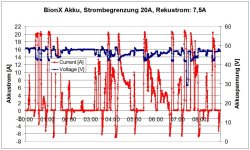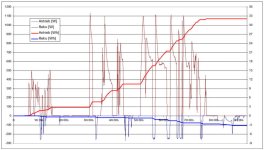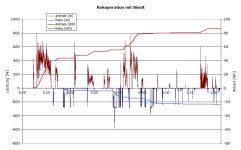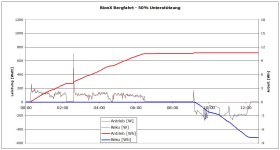I don't know exactly how much capacity is used for each part, but as a general rule of thumb if I have a lot of full stops / starts, I will get significanlty worse Wh/mile than if I am cruising around without having to stop much.
As an example, my work commute of ~2.2 miles each way has at least a dozen complete stops and starts, on average, for traffic lights, etc. I get a typical Wh/mile of 29-32 on that, either direction, under various conditions.
However, on another much longer 20-25 mile total route I do every so often, which only has a stop about every mile or so (occasionally on hte half mile as well) I get a tyipcal Wh/mile of 20-24, about 2/3 of the above.
On an ~10 mile (each way) ride along hte canal path, where there are no stops but there are fairly steep but short "hills" on the underpasses to the roads the path crosses, every ~1.5 miles, I can get as low as 19-20/mile, average, if there is no wind--but because it is a long stretch of straight unobstructed path for many miles, almost directly along the most common wind direction corridor for this part of the city, there is almost always wind and becuase of timing of trips and wind direction changes during the day, I'm almost always riding against hte wind, which makes it closer to 25-30Wh/mile again, depending on the wind speed.

All are with no pedalling, cruising at just under 20MPH, acceleration as hard as I can, 40A 12FET controller, 9C 2806 26" front, ~350lbs bike+rider/etc, almost completely flat terrain.







